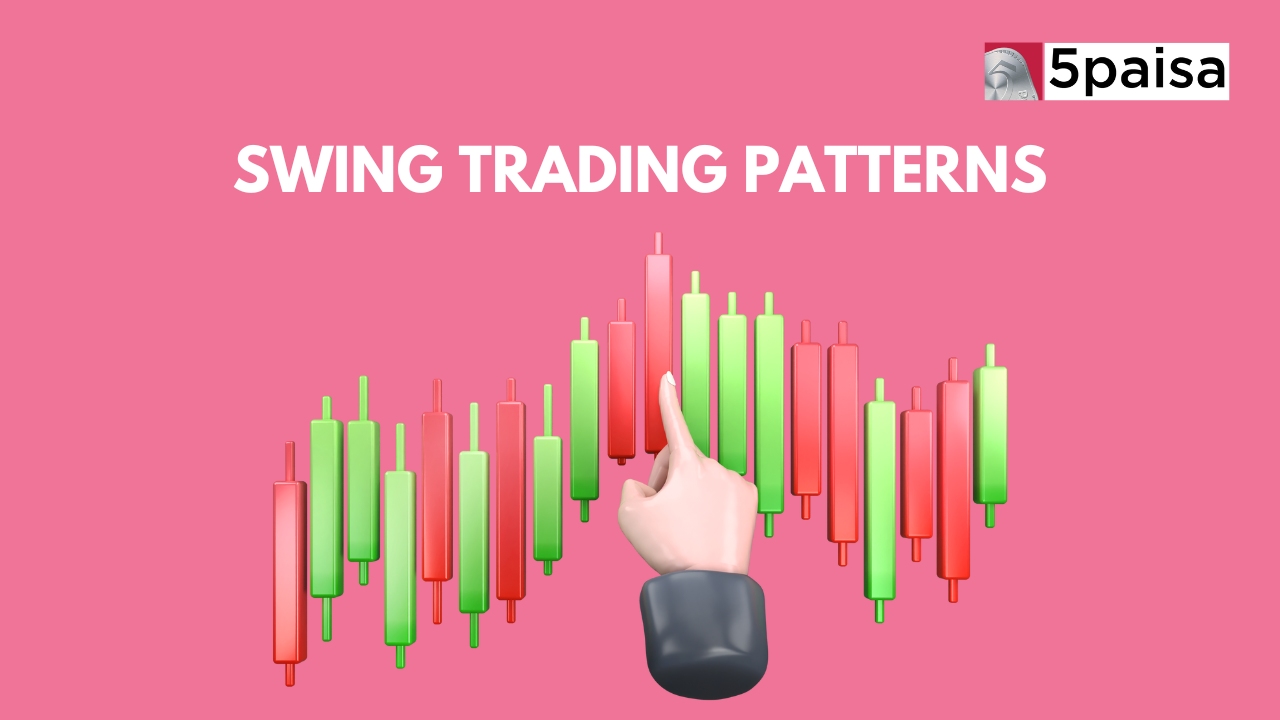Swing trading is a style of trading where you hold stocks for a few days or weeks to catch short-term moves. Instead of waiting for years like long-term investors, swing traders look for smaller gains by riding the “swings” in stock prices. To trade better, they use swing trading patterns. These patterns appear on stock charts and give clues about where prices might go next.
List of Popular Swing Trading Patterns
- Ascending Triangle
- Descending Triangle
- Head and Shoulders
- Inverse Head and Shoulders
- Double Top
- Double Bottom
- Cup and Handle
- Flags
Why Patterns Are Important
Patterns work like road signs in the stock market. They help traders know when to enter or exit trades. In India’s fast-changing markets, these patterns reduce confusion and bring more confidence. By spotting them early, traders can set stop-losses, plan profit targets, and avoid random guesses.
Main Swing Trading Patterns
Ascending Triangle
This pattern shows strength. The price keeps making higher lows while staying under the same resistance. On a chart, it looks like a triangle pointing upwards. If the price breaks above the resistance with strong volume, traders usually buy because it signals more upside.
Descending Triangle
This pattern points to weakness. Prices make lower highs but stay above the same support. On a chart, it looks like a triangle pointing downwards. If the price falls below support, many traders sell because it often means a bigger drop is coming.
Head and Shoulders
One of the most common reversal patterns. It has three peaks: two smaller ones (shoulders) with a taller peak in the middle (head). When the price falls below the neckline, the uptrend usually ends, and a downtrend begins. Traders often sell here.
Inverse Head and Shoulders
This is the opposite of the normal version. It has three dips: a deep one in the middle and two smaller ones on each side. When the price breaks above the neckline, it often signals the start of an uptrend. Traders usually buy at this point.
Double Top
This pattern forms when the price touches the same high twice but fails to break through. It shows that buyers are losing strength. When the price falls below the support between the two highs, traders see it as a bearish signal and often sell.
Double Bottom
The reverse of a double top. The price falls, bounces, and then retests the same low again. If it then breaks above resistance, it usually means buyers are taking control. Traders see this as a bullish reversal and enter long positions.
Cup and Handle
This pattern looks like a teacup. First, the price falls and slowly rises to form a rounded “cup.” Then, it dips slightly to create the “handle.” When the price breaks above the handle’s resistance, it often signals that the uptrend will continue.
Flags
Flags form after a sharp move. A quick rise or fall creates the flagpole, followed by a short sideways or sloping move that looks like a flag. Once the price breaks out in the same direction, the trend usually continues.
How to Use Swing Trading Patterns
To use patterns well, patience is key. First, confirm that the pattern has fully formed. Jumping in too early can lead to mistakes. Next, use tools like RSI, moving averages, or MACD to confirm the move. Always check trading volume; strong breakouts usually come with high volume.
Plan your trades before entering. For example, in a double bottom, you could buy when the price crosses resistance, place a stop-loss below the second low, and aim for a profit equal to the pattern’s height. Having a clear plan removes emotions from decisions.
Mistakes Traders Often Make
Many beginners rush into trades without waiting for full confirmation. Others trade incomplete patterns and face losses. Some ignore the wider market news, which can change everything quickly. Not using a stop-loss is another common error that can lead to big losses.
Overtrading is risky too. Chasing every small signal or holding onto losing trades out of fear or greed usually hurts results. The key is to focus on quality setups and stick to your plan.
Why Patterns Suit the Indian Market
India’s stock market often reacts sharply to news, policies, or global trends. Swing trading patterns help traders make sense of these moves. They are useful for students, working professionals, or part-time traders who can’t watch charts all day. By holding trades for a few days or weeks, they balance flexibility with opportunity.
Conclusion
Swing trading patterns are powerful tools for short-term trading. Whether it’s triangles, double tops, or the cup and handle, these shapes guide traders on when to enter and when to exit. By combining patterns with technical indicators and risk control, traders can improve their chances of success.
No pattern guarantees profit, but using them with discipline reduces mistakes and builds confidence. For Indian traders, learning these patterns is like learning the basics of driving—you need them to move safely and steadily on the market’s fast-changing road.


 5paisa Capital Ltd
5paisa Capital Ltd